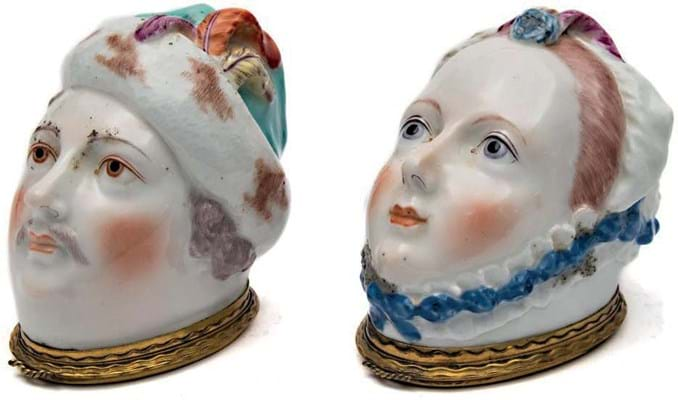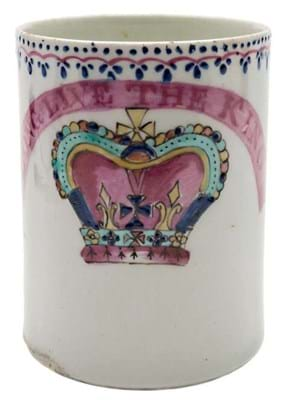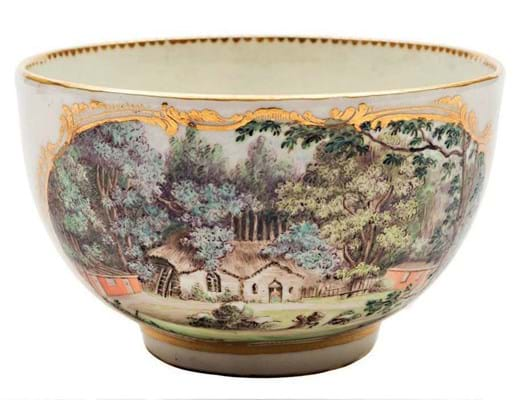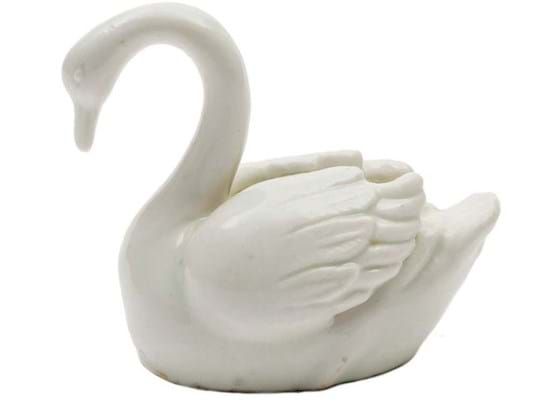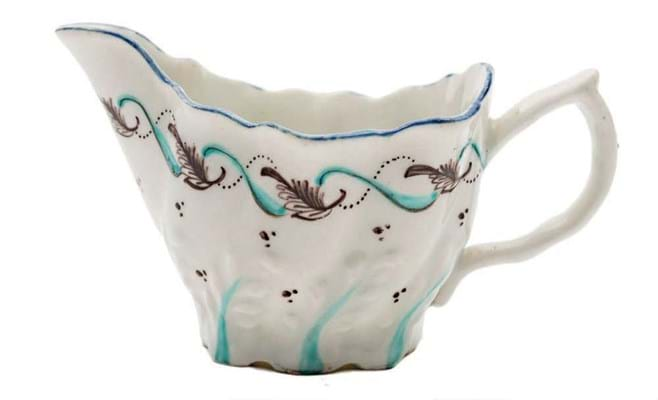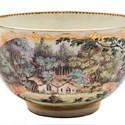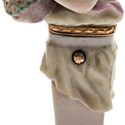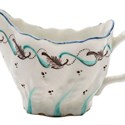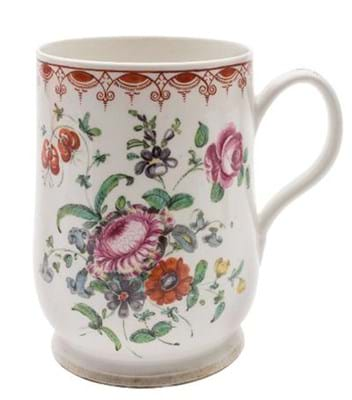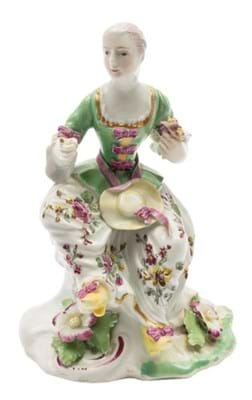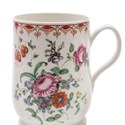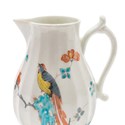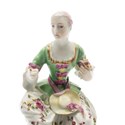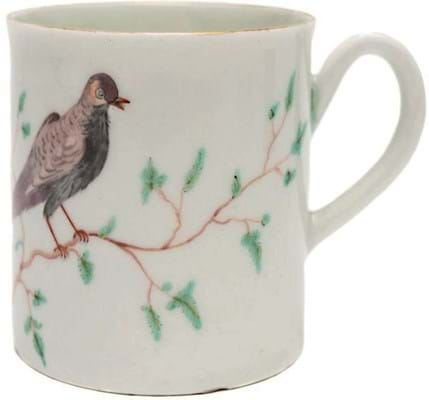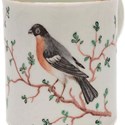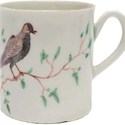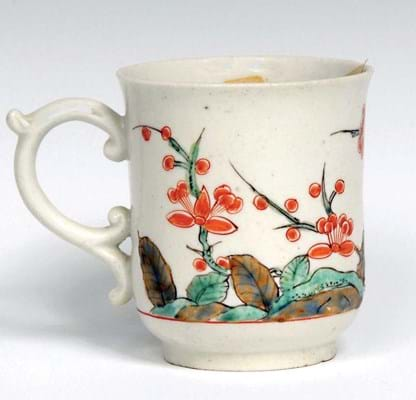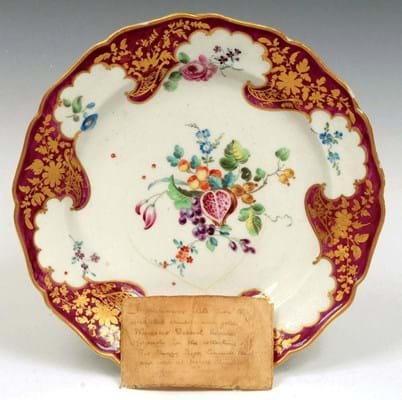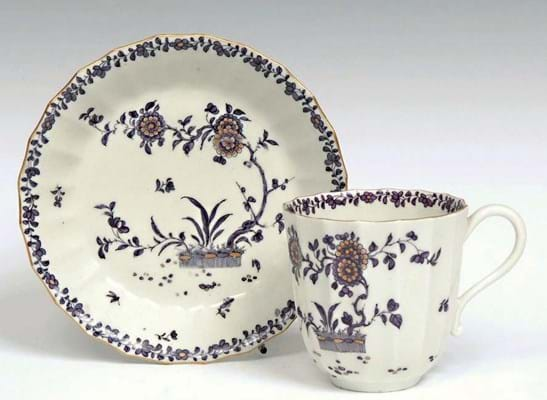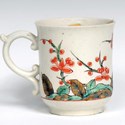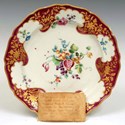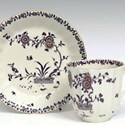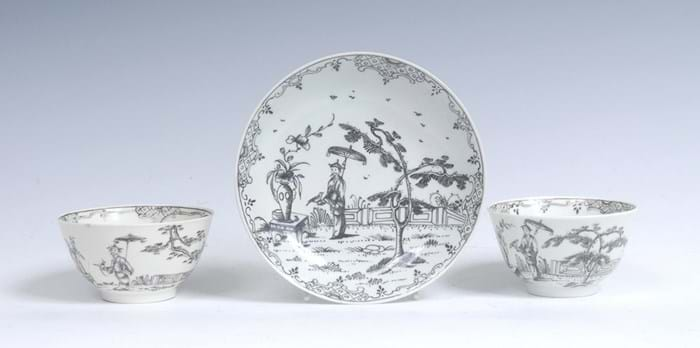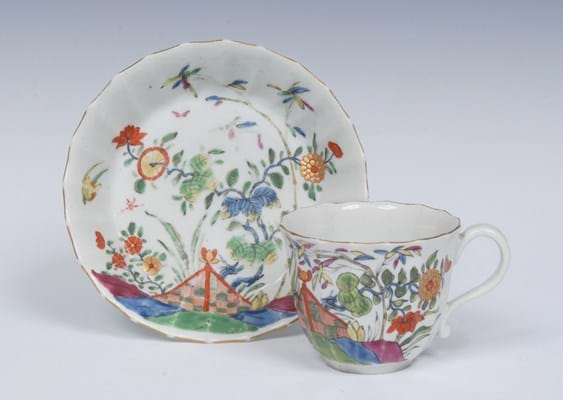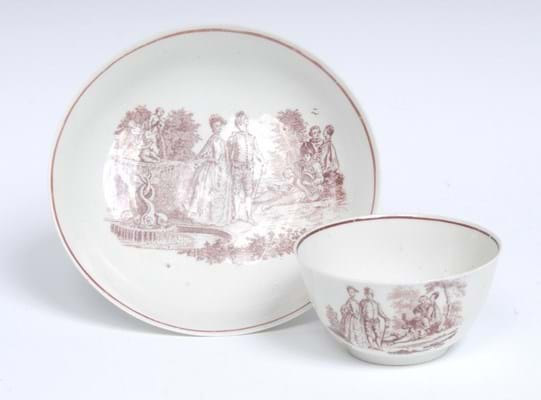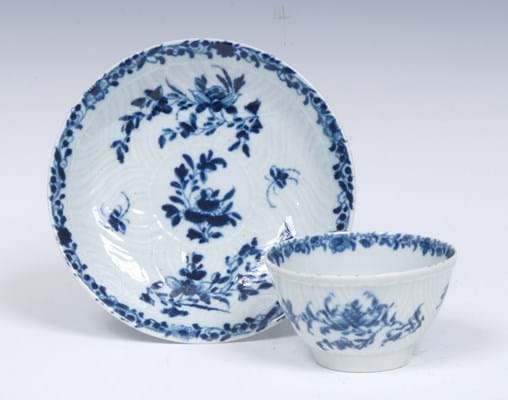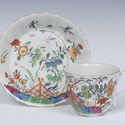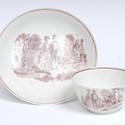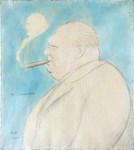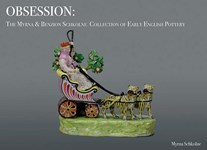The well-respected and long-standing dealer in English porcelain Simon Spero sees the situation thus: “In England, it is essentially a middle-class pastime, which is partly why things are so difficult now because middle class people generally have less spending money.”
Many existing collectors are looking only for opportunities to fill gaps with rare prizes.
“Condition is important but even more important in the market is rarity. The majority of collectors are of a certain age and if they haven’t seen something in 30, maybe 50 years of collecting they think ‘I’ve never seen it before, I want it, I’ll never have a second chance’.”
This underpins the current price polarisation between the best or most fashionable wares and the majority of material that slumbers on at pedestrian prices.
A brace of named collections
The ‘best and rest’ results in two porcelain collections offered at opposite ends of the country this year illustrate this.
On January 22 in Exeter Bearnes Hampton & Littlewood (21% buyer’s premium) offered the 125- lot collection of 18th century English porcelain formed by Gerald and Brenda Flowerday over a 40-year period spanning the late 1960s to the early 2000s.
Two weeks later, on February 6, Bamfords (21% buyer’s premium) in Derby put the first 225-lot slice of the Robert and Celia Morris collection of first period Worcester under the hammer.
The Flowerdays, who married in 1950, were probably initially encouraged in their porcelain pursuit by the well-respected dealer ED Levine and the dealer TCS Brooke of Wroxham. They were particularly active in the 1980s and ‘90s buying at fairs, auctions and through the major ceramic dealers.
“A little collection but a collection of character. It was rather ideal for the market as it is Simon Spero on the Flowerday collection
“Eggs on toast would go down just as well as we examined our latest addition Celia Morris on the benefits of economy
Small but select
The result was a collection of pieces across the major English factories of the period: Chelsea in particular, Bow and early Worcester but also Derby and Lowestoft.
“The fact it was spread around different factories and different forms gave that sale the best chance it could have had,” said Spero. “A little collection but a collection of character, chosen with taste and not predictable. In a sense it was rather ideal for the market as it is.”
Bearnes’ specialist Andrew Thomas described it as “so stimulating to catalogue”. It helped, he said, that he was allowed to set estimates as he thought fit.
The collection found favour with the mix of dealers and collectors (including some US bidders) who contested it in the room, online and via the phones with all bar seven lots finding buyers.
There were standard pieces, but the Flowerdays’ pursuit of Chelsea ‘toys’, Lowestoft animals and Worcester decorated in the London studio of James Giles ensured some notable prices. These are among the few categories that can outpace values of a quarter century ago.
Chelsea head bonbonnieres certainly fall into the ‘wait for years to own one’ category. However, the Flowerdays had half a dozen.
The most expensive was pictured on the catalogue cover: modelled as a lady wearing a black mask revealing eyes inset with rose diamonds, the gold mount enamelled with the motto Votre Amitie Fait Mon Bonheur.
It more than doubled the estimate to sell for £4600. Another version of this model (with some restoration) sold for £3600 as part of a collection ‘toys’ sold by Sworders in 2016.
This was followed at £4200 by a matched pair of male and female heads, also pictured here, with others ranging from £1550 to £2600.
Porcelain ‘toys’ have undergone something of a re-evaluation recently: some are now ascribed to the St James factory of James Gouyn.
BHL attributed two pieces to St James, a 4in (10cm) high etui, which realised £1550 (it was restored) and a tiny 1¼in (3cm) seal formed as a seated lady at £700.
The Flowerdays’ Lowestoft included pieces from the two most popular categories: animals and inscribed pieces as well as more standard fare.
Topping the bill here at £5300 (estimate £3000-5000) was a small commemorative mug decorated with a hitherto unrecorded design of a crown in puce, blue, turquoise and yellow and the legend Long Live the King. Dated to 1790-95, this is thought to relate to a period when George III was in remission after suffering his first bout of ill-health.
An inkwell with four quill holes of the same period initalled HL in gilt and painted with flower sprigs sold within estimate at £3400.
Of the animals the most expensive was a white model of a swan at £4400. Like a small restored model of a reclining ewe from c.1780-85 sold for £850, it had a provenance to the well regarded Lowestoft dealer and collector Margaret Corson.
James Giles appeal
The most sought-after pieces of Worcester these days are those from the very first years of production and examples decorated by the Giles atelier. Two little Giles coffee cans from the 1760s, delicately painted with naturalistic birds on rudimentary branches, overshot hopes of £500-700 each. A contest between several dealers took the prices to £4000 on the first example and no less than £6100 on the second, with both selling to the same trade buyer.
Earlier on a c.1760, 4½in (11cm) high first period Worcester mug, delicately painted with sprigs of flowers, also somersaulted over the same estimate to take £3000, carried off by a determined collector.
The Morris collection offered by Bamfords the following month was a very different ensemble: larger at over 460 pieces in total and devoted entirely to one factory.
Robert Morris, a locksmith who died in 2014 and his wife Celia collected for over 20 years.
As Celia recalls in the catalogue introduction: “Our initial interest turned into a passion for both of us… We were ordinary people with a small, not always successful business… sometimes we could not afford a Sunday roast due to our latest purchase. However, eggs on toast would go down well as we examined our latest addition”.
That passion eventually grew to 15 cabinets’ full of Worcester porcelain – housed in a flat above a traditional locksmith shop. “You would never know such a collection was in this house,” said Bamfords’ Annabel Lewis of the Aladdin’s cave of porcelain she found in modest surroundings.
A comprehensive collection
In scope and range of values, it mirrored two of its predecessors dispersed by Bonhams early this century: the mammoth Zorensky collection sold in three sessions between 2004-06 and the Sir Jeremy Lever collection of 2007-08 where the Morris’ bought heavily.
All aimed to be comprehensive (Jeannie Zorensky wanted an example of every known Worcester pattern) so embraced plenty of standard fare alongside rarities.
The Morris collection was presented in a single hardback catalogue but the decision to sell in two sittings (the next in September) was doubtless a sensible one – particularly given Celia Morris’ laudable wish that the collection be sold as individual items “so that everyone, no matter what their means, might have the chance of owning one of these pieces”.
Bamfords got away a very respectable three-quarters of the 225 lots in this first sale. Estimates had largely been set at reasonable levels and most lots sold as predicted for three-figure sums. Annabel Lewis said there were 45 successful buyers – online and in the room.
Topping the bill at £1900 was a 1750s tureen naturalistically modelled and coloured as a partridge. With a guide of £1000- 1500, this was always expected to be one of the day’s best sellers. So too was the coffee cup with a prunus root pattern also pictured which sold for a mid-estimate £1300.
Dating from c.1752, this little piece is an example of the currently desirable class of Worcester from the earliest years of production.
Its provenance too encapsulated the genesis of the Morris collection with a line of past appearances in single-owner sales at Bonhams. It formed part of the first Bernard Watney sale, appeared in part three of the Zorensky sales in 2006 and went on to feature in the first Jeremy Lever auction in 2007. It then sold in 2010 from the Paul Crane collection and on that last appearance on the rostrum, it had realised £1700.
Bamfords had not, however, predicted as much as £1400 for a scale blue ground butter tub, cover and stand of c.1768 painted in the Giles studio with cartouches of brightly coloured flowers. The hammer price somersaulted over a guide of £200-300.


